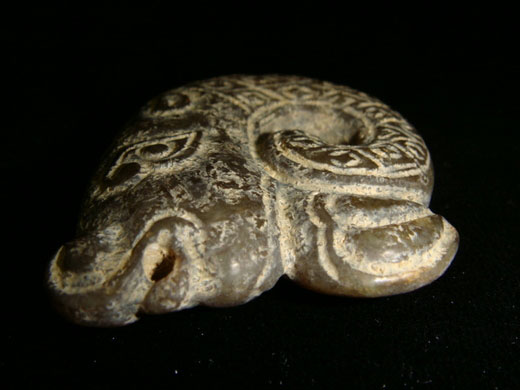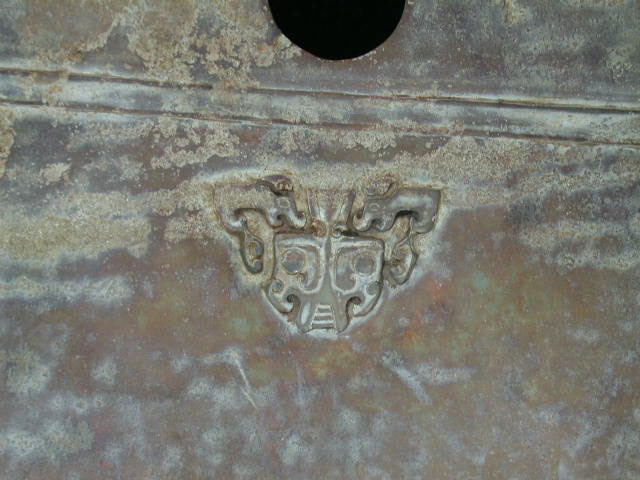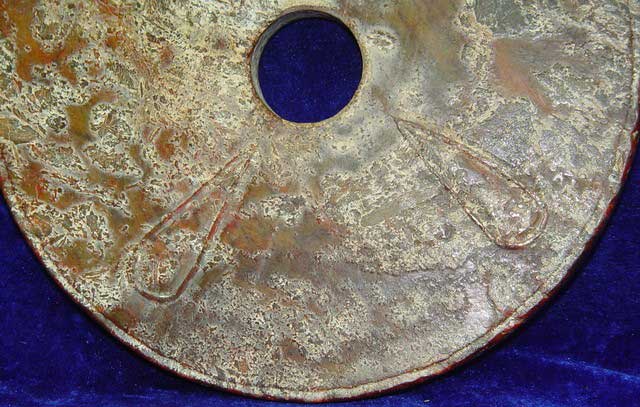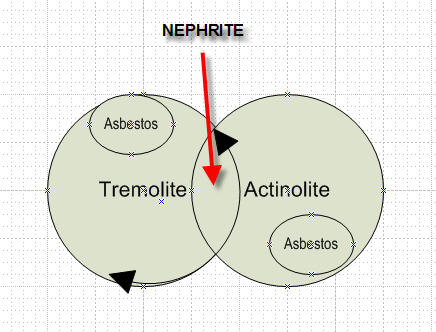
|
Subject:Myth & Fact regarding nephrite jade & asbestos
Posted By: Thu, Jan 07, 2010 IP: 67.159.44.138
A while ago, I was handling a large number of nephrite and serpentine jade carving, rocks, slabs, with some of them seem to have rough edges and some with interesting smell, it had caused me concerns about how safe it would be to handle such material on a routine basis especially after I had read about the relationship between tremolite, actinolite, nephrite, serpentine and asbestos.
I had consulted Mike, a fellow jade collector, who is also a geologist, who assured me that it would be safe to handle such material.
You see, while asbestos can be a fibrous form of serpentine, actinolite or tremolite and nephrite is composed of both tremolite and actinolite, nephrite is really not asbestos despite what Ms. Mui tried to imply.
http://users.lmi.net/drewid/Lap_Techniques.html
http://users.lmi.net/drewid/DFNephrite_asbestos.html#Anchor-34673
In this article written by Mr. Richard Friesen, "
Nephrite, Asbestos, and Rock Dust- Safety Factors in Lapidary Work" he explained it much better than me:
"Nephrite and Asbestos by Richard Friesen
Nephrite is NOT asbestos. The confusion arises from the fact that nephrite has the same chemical composition as one of the forms of asbestos (Actinolite)."
If nephrite is not asbestos, then no matter what it was treated with, acid or alkaline or apple juice, it cannot result in the formation of asbestos and therefore they cannot make you sick like Ms. Mui claimed.
Mr. Friesen further explained:
"The characteristic of asbestos that causes trouble is its ability to easily break into fine fibers that are too small to be seen by the human eye. Nephrite does not have this character. Nephrite is a amphibole silicate but physically it is similar to chalcedony in that they both have a fibrous structure. Nephrite fibers have different directional hardness which results in its tendency to orange-peel. The real problem with asbestos is the quantity of fibers that are released when the material breaks up. The fibers are not tightly bound together and break up easily when they are disturbed. With nephrite or chalcedony the fibers that are released are just what you grind out."
Now that is a wonderful explanation.
Now does that mean there would be no health hazard with nephrite, correct? No, the writer further explains:
"So there is no problem with nephrite, right? No, there is a potential problem. Sanding any silicate can generate silica particles and silica, when freshly ground, is suspected to be even more toxic than asbestos. Wet grinding controls the heavier particles and is definitely recommended on material that does have a chemical toxicity- as well as being a good idea anytime."
Well, I guess if any of us jade collectors would be crazy enough to re-sand any nephrite jade carvings or try to create a piece of nephrite jade carving from scratch, then we better wear a industry-quality mask while we are doing so.
Now what will happen if some of us want to polish a piece of jade and that is what the writer says,
"Polishing also produces airborne particles, but I have not been able to find any reports on the carcinogenic effects of the oxides we use, so I guess we are safe there for a while. But even this may not be correct. I have heard that chrome oxide may be toxic, but I have not been able to find the data. "
Now if you would like to read his whole article, you can click on the above link and do so in your leisure time.
However, from this article written by a jade lapidary expert:
"Richard Friesen, a frequent contributor to Rock and Gem magazine as well as a noted lapidary, has graciously consented to my publishing here some articles he has posted from time to time in the Lapidary Digest and various online forums. The advice he gives is based largely on his own extensive personal experience."
It is very clear that:
NEPHRITE IS NOT ASBESTOS!!!!!!!
Therefore, no treatment on it should create asbestos.
Secondly, being a double majors in college with one of my majors being Chemistry, I am very doubtful with the automatic assumptions of many jade collectors that artificial weathering were created with acid in resulting so-called acid-treated jade fakes.
With my clinical laboratory experience, I had handled many different types of conc. acids such as H2SO4, HCL, HNO3 but I do not believe any of these acid can do anything to a piece of nephrite jade carving. The only acid that may be able to "eat up" nephrite will be HF, Hydrofluoric acid. However, it is extremely toxic, expensive and is very dangerous to handle (it will melt glass container and it will eat up the eye membrane of the handler if he is not careful). The only other means in creating those weathering on jade fakes with acid would be to fracture the jade surface with metal tools and then treat them with strong acid. Serpentine would be much easier to treat with acid or heat to produce white weathering.
On the other hand, alkali such as NaOH, lime will be much more caustic and therefore were very being used in the creation of artificial weathering on jade fakes. I know because when I was handling radioactive istopes we must routinely decontaminate the drainage sink with sodium hydroxide (NaOH) solution made from mixing NAOH pellets with water. This NAOH solution will eat up anything and will definitely create a white coat on it. Other strong alkali such as lime could probably be used for this purpose because it is cheap and easy to obtain.
Unfortunately, there are simply not enough academic literature in the studying of the effects of chemicals being used in creating jade fakes. Many methods that were described in ancient Chinese jade books were simply the results of imaginations of the book writer, such as using dog blood to soak jade to create red color, etc.
One thing is clear though, we must separate all these misinformation from actual facts when we are studying or collecting jades, or we will inadvertently pass such misinformation to other jade collectors.
Bill


|
 Fake jade artifacts can make you sick!
Fake jade artifacts can make you sick!  ( ) - Anita Mui - Jan 06, 2010 (06:52 AM)
( ) - Anita Mui - Jan 06, 2010 (06:52 AM)  Myth & Fact regarding nephrite jade & asbestos - Bill - Jan 07, 2010 (08:55 PM)
Myth & Fact regarding nephrite jade & asbestos - Bill - Jan 07, 2010 (08:55 PM)  Re: Myth & Fact regarding nephrite jade & asbestos - Anita Mui - Jan 08, 2010 (12:44 AM)
Re: Myth & Fact regarding nephrite jade & asbestos - Anita Mui - Jan 08, 2010 (12:44 AM)  Re: Myth & Fact regarding nephrite jade & asbestos - Bill - Jan 11, 2010 (08:06 PM)
Re: Myth & Fact regarding nephrite jade & asbestos - Bill - Jan 11, 2010 (08:06 PM)  Re: Re: Myth & Fact regarding nephrite jade & asbestos - Anita Mui - Jan 12, 2010 (12:43 AM)
Re: Re: Myth & Fact regarding nephrite jade & asbestos - Anita Mui - Jan 12, 2010 (12:43 AM)  Understanding of geology? - Bill - Jan 13, 2010 (05:47 PM)
Understanding of geology? - Bill - Jan 13, 2010 (05:47 PM)  Re: Myth & Fact regarding nephrite jade & asbestos
Re: Myth & Fact regarding nephrite jade & asbestos  - Bill - Jan 15, 2010 (03:23 PM)
- Bill - Jan 15, 2010 (03:23 PM)  Re: Re: Myth & Fact regarding nephrite jade & asbestos - Anita Mui - Jan 15, 2010 (11:10 PM)
Re: Re: Myth & Fact regarding nephrite jade & asbestos - Anita Mui - Jan 15, 2010 (11:10 PM)  Re: Re: Myth & Fact regarding nephrite jade & asbestos - Trish Wilson - Jan 16, 2010 (11:48 PM)
Re: Re: Myth & Fact regarding nephrite jade & asbestos - Trish Wilson - Jan 16, 2010 (11:48 PM)  Re: Re: Re: Myth & Fact regarding nephrite jade & asbestos - Anita Mui - Jan 18, 2010 (01:25 AM)
Re: Re: Re: Myth & Fact regarding nephrite jade & asbestos - Anita Mui - Jan 18, 2010 (01:25 AM) 


